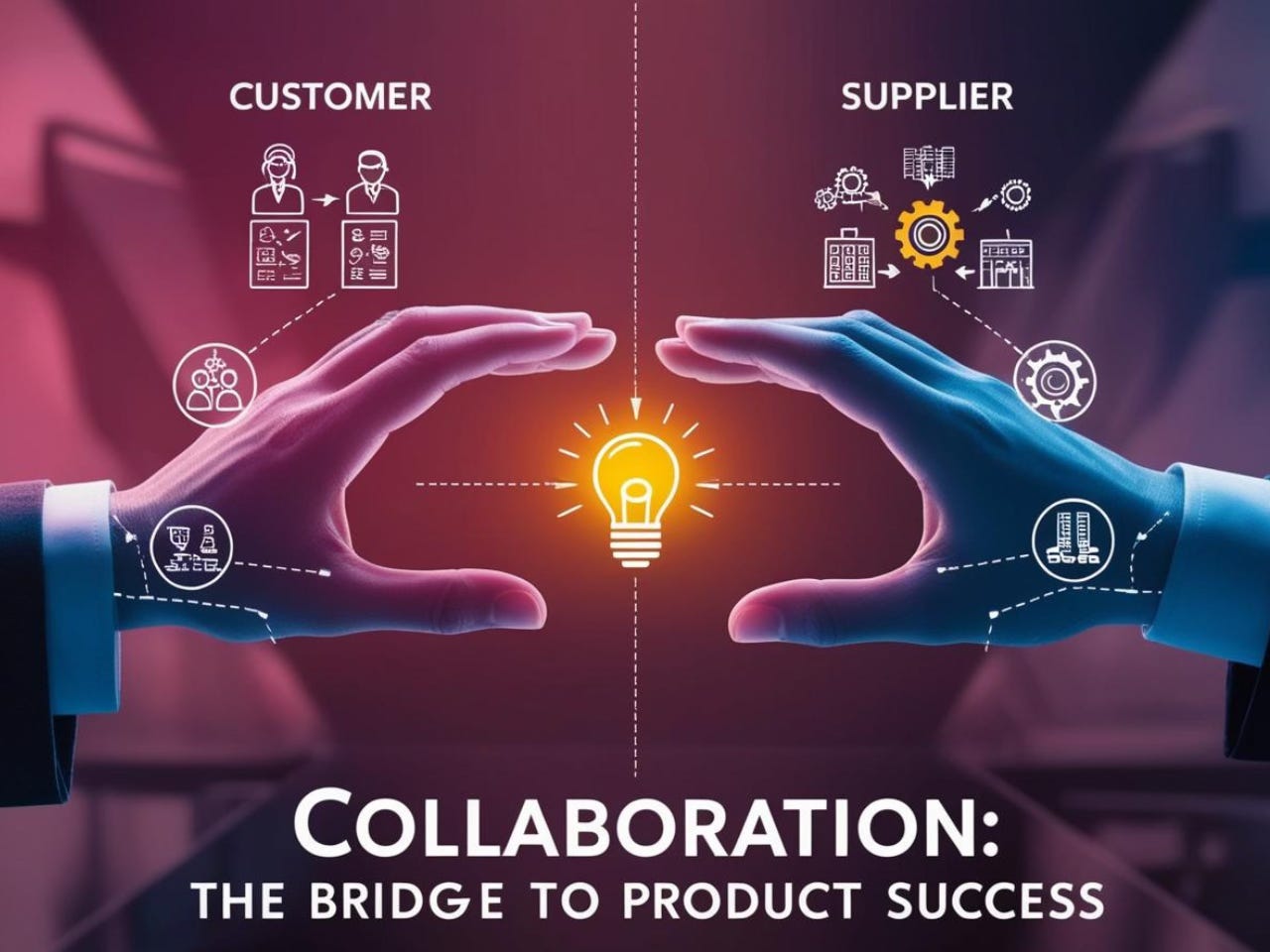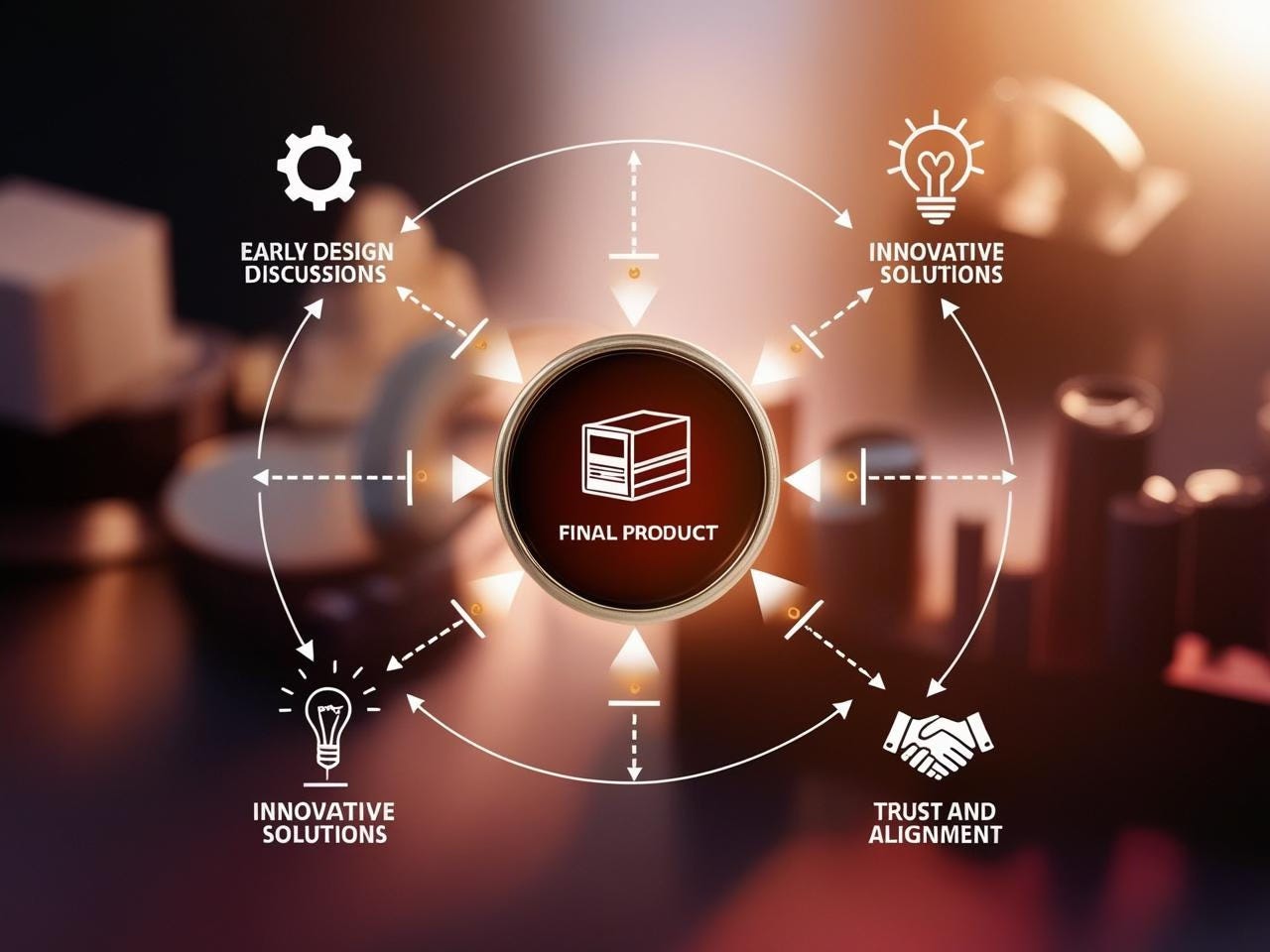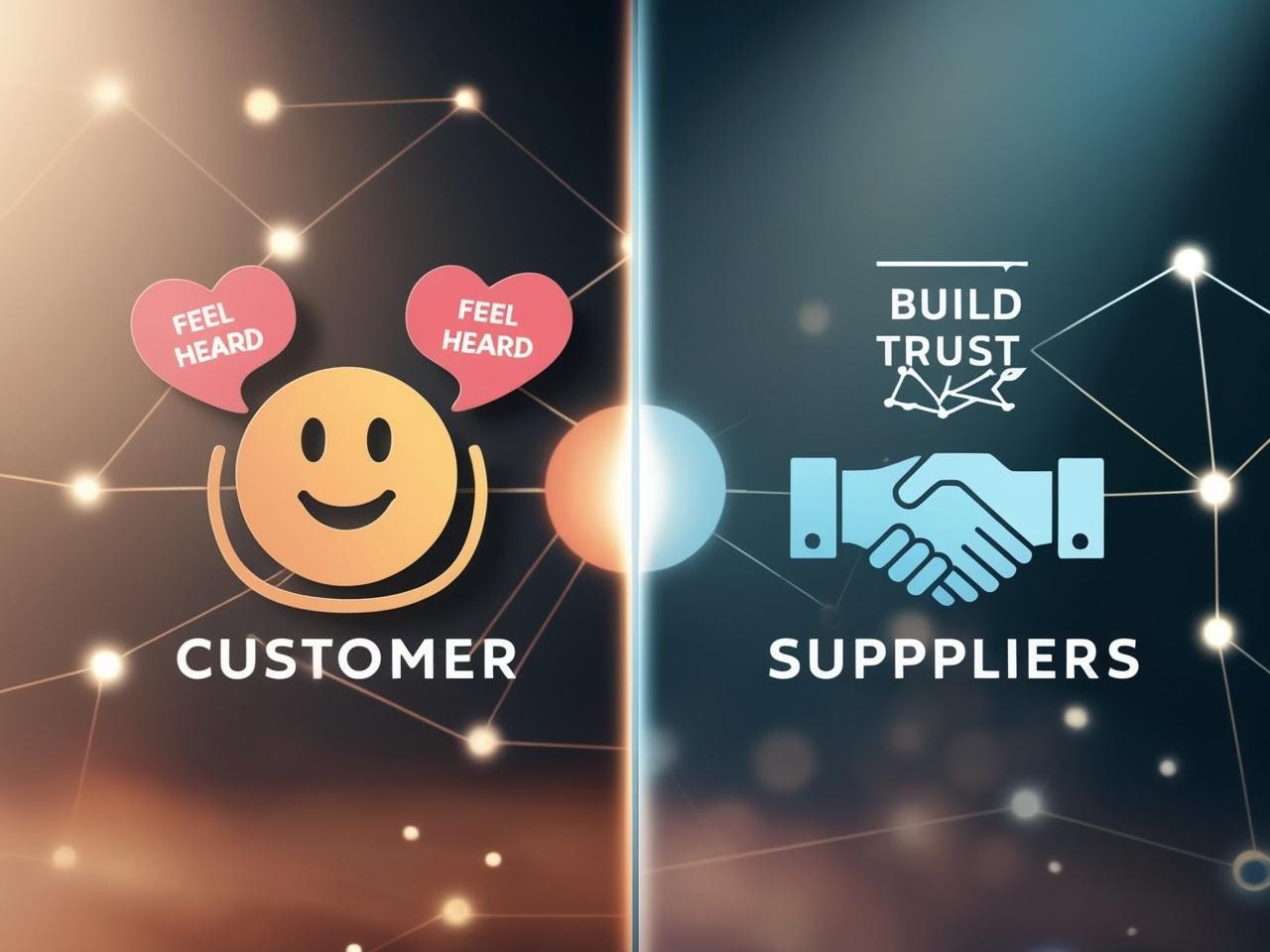42% of products fail, Here's how collaboration can save yours!
Discover how collaboration with customers and suppliers drives product success. We discuss actionable strategies to balance customer needs with cost effective development for better product-market fit
As a product marketer, I’ve realized product success is rarely achieved in isolation. Collaboration is key and I’ve seen firsthand how collaboration can make or break a product.
Success lies in bridging the gap between customer collaboration, ensuring the product meets their needs and supplier partnerships, streamlining cost-effective development.
When done right, collaboration creates products that truly fit. Let’s dive into how this works and actionable steps you can take to make it happen.
Listen to the article in podcast on Spotify
Continue reading, here.
The Power of Product-Fit
At one end of the spectrum, there’s the “customer’s willingness to pay”. If the product doesn’t solve their problem or fulfill their needs in a way that resonates with them, price becomes irrelevant, it simply won’t sell.
On the other end, we face the “cost-effective development of the product”. Without streamlined processes, efficient supplier partnerships, and an optimized supply chain, any value created for the customer may come at an unsustainable cost.
The magic lies in balancing these two extremes to create a product that:
Provides solutions for customers, solves pain and issues
Is economically feasible to develop and scale.
Did you know 42% of startups fail because they don’t meet a market need?1 This underscores how crucial it is to align with your customer’s needs.
On the flip side, 85% of product development projects experience cost overruns, often due to inefficient collaboration with suppliers.2 Balancing these two extremes, customer desirability and supplier feasibility is the hallmark of successful product marketing.
Why Collaborate with Customers?
Customers are the ultimate judges of your product’s success. They know where the pain points are, how they interact with your product daily, and what “better” looks like for them. Yet, too often, we skip involving them until its time for feedback, or worse, when they decide not to buy. Involving them early in the process ensures your product addresses their needs and resonates with their expectations.
What does effective collaboration look like?
Here’s what collaborating with customers look like,
Invite them into the ideation process.
Engaging customers early development stages can significantly boost the likelihood of your product accepted in the market. Products co-created with customers are 20-50% more successful in the market3.
Create early rapid prototypes and gather feedback.
This approach ensures that the product resonates with the users and meet their expectations. Slack engaged early adopters to refine workflows, leading to a $27 billion valuation.
Co-create use cases.
Working with customers to refine how the products fit into their workflow ensures delivers tru values solving the real pains. Build real-world solutions by aligning with customer workflows and needs.
Why Collaborate with Suppliers?
Suppliers aren’t just vendors, they’re co-creators. They understand the materials, technology, and manufacturing in ways that can directly impact your products feasibility and cost structure. Their expertise in materials, manufacturing, and technology can save time, reduce costs, and improve quality. Treating them as co-producers rather afterthoughts unlock innovation.
What does effective collaboration look like?
Here’s how you can collaborate effectively,
Involve them early in design discussions.
Their expertise can help optimize the product design for manufacturing and cost efficiency. Companies that collaborate with suppliers during the design phase reduce costs by 12-20%. (Deloitte)
Encourage open communication.
Sharing your goals and constraints helps suppliers propose better solutions, therefore transparency is important. Clear communication of goals can cut development time by 30% or more. (PwC)
Build Trust
A collaborative relationship creates alignment toward mutual success rather than transactional exchanges. Trust building fosters it. Long-term partnerships, like Apple’s with TSMC, foster consistent innovation and mutual growth. (Apple newsroom)
The Emotional Intelligence Factor
Collaboration is about more than processes, it’s about people. Both customers and suppliers need to feel heard, valued and understood. When you approach customers and suppliers with empathy and active listening, you foster trust and openness.
Empathy with Customers: Show genuine care for their challenges to build lasting loyalty.
Trust with Suppliers: Engage them as partners, not just vendors, to unlock their expertise.
Actionable Insights for Product Marketers
1. Launch a customer collaboration program
Engage users for regular feedback and co-creation. Set up regular touchpoint with users, not just for feedback but for co-creation. Shadow them if possible.
2. Host supplier workshops
Brainstorm cost effective solutions and streamline developments, like optimizing design, alternatives, and development without compromising the product quality.
3. Communicate the bigger picture
Help stakeholders understand how their inputs drive mutual success. Help them understand the bigger picture of how they can be part of the innovation journey adding value.
4. Track ROI on collaboration
Track the impact of joint efforts on product satisfaction, cost reduction, and time-to-market. Companies that measure collaboration outcomes reduce time-to-market by15-25% (Gartner).
Final Thoughts
Creating a product that fits
As product marketers we are the glue that binds product development to market needs. Collaboration isn’t just a buzzword, it’s a strategy that drives better products, stronger partnerships, and faster time-to-market. By aligning with your customers’ needs and leveraging your suppliers’ expertise, you create products that succeed in every sense of the word.
Collaboration is essential to navigate the complex balance between creating value for customers and achieving operational excellence.
when we collaborate with emotional intelligence, the result is a product that fits perfectly, not just for customer who pays but for the entire ecosystem that brings to life.
Let’s continue the conversation. How do you collaborate with customers and suppliers in your role? Share your insights below!
Want more actionable insights? Subscribe to our blog for weekly updates that will elevate your product marketing strategies!








